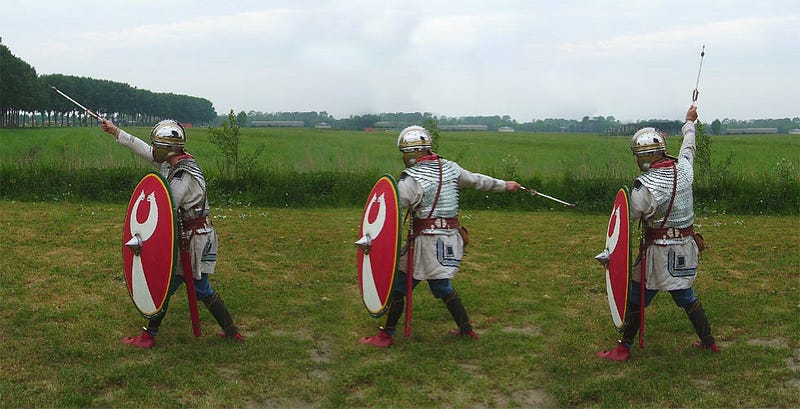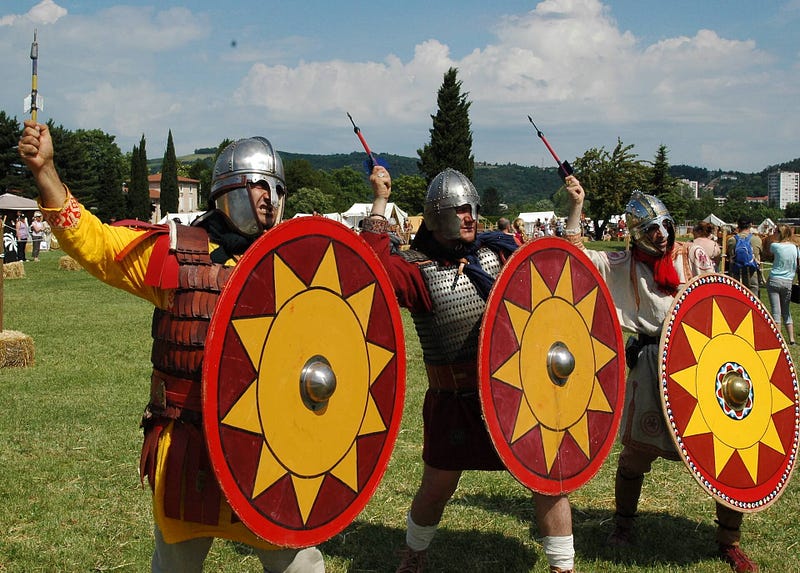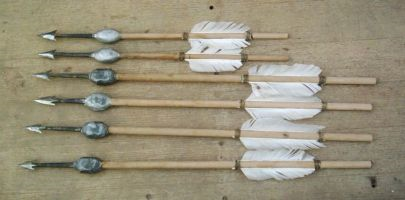The Plumbata: Exploring the Roman Empire's Forgotten Dart Weapon
Written on
Chapter 1: Introduction to the Plumbata
The plumbata, a small yet formidable war dart, played a crucial role in the arsenal of Roman soldiers. Initially overshadowed by the well-known pilum, a javelin that shattered upon impact, the plumbata emerged as a vital tool for long-range attacks as the Roman military evolved.

Section 1.1: Evolution of Roman Weaponry
As the centuries progressed, Roman forces adapted their tactics to counter new threats. The pilum was eventually supplanted by longer spears and swords, such as the gladius and spatha. To effectively engage enemies from a distance, the Romans integrated the plumbata into their combat strategies.
Subsection 1.1.1: The Origins of the Plumbata
Originating in Greece around 500 BC, the plumbata saw widespread adoption by Roman soldiers by 300 AD, especially within the Eastern Roman armies. Affectionately dubbed the "little barbs of Mars," this weapon was named after the Roman god of war.

Section 1.2: Design and Specifications
Each soldier in the Roman and Byzantine armies carried five plumbatae, often secured to the inner side of their shields. These darts could be thrown either overhand or underhand, with the latter technique preferred for long-distance throws. Remarkably, the plumbata could accurately strike targets over 80 meters (260 feet) away.
The design of the plumbata included an iron tip, a lead weight, and a wooden shaft with fletching to stabilize its flight. The overall length was approximately 30 centimeters (1 foot), with the iron tip measuring 9 centimeters (3.5 inches) and the lead weight at 6 centimeters (2.3 inches). Weighing between 130 and 350 grams (4.5–12.3 ounces), the plumbata could inflict significant injuries without necessarily being lethal.
Chapter 2: The Tactical Advantage of the Plumbata
In the video titled "The Plumbata — The Forgotten Long-Distance Weapon of The Romans," viewers are introduced to the plumbata’s historical significance and its usage in warfare, highlighting its effectiveness on the battlefield.
The plumbata proved to be an effective harassing weapon. It was particularly useful against lightly armored opponents and horses. Imagine being part of a marching unit, shield raised for protection, when suddenly a barrage of plumbatae descends upon you. This scenario creates a dilemma: protect your head and shoulders or expose your midsection to the long Roman spears.

Section 2.1: Advantages Over the Pilum
The plumbata offered several advantages compared to the pilum. Each soldier carried five plumbatae instead of two pilums, enjoyed a longer range, and found them easier to transport. Additionally, they were more cost-effective to produce and required less training to master. After a battle, soldiers would often collect and refurbish these darts, ensuring they were ready for future engagements.

Chapter 3: A Weapon of Historical Significance
The second video, "The Plumbata | Weapons of History," delves deeper into the historical context of the plumbata and its impact on Roman warfare, showcasing its strategic importance.
Despite its current obscurity, the plumbata was once a respected long-range weapon during the Roman Empire. Notably, under Emperor Diocletian's reign (284-305 AD), two legions from Illyricum (modern-day Balkans) gained a reputation for their exceptional skills in using the plumbata, leaving a lasting impression on the emperor himself.
In conclusion, could you compete with the legions of ancient Rome in a game of darts?